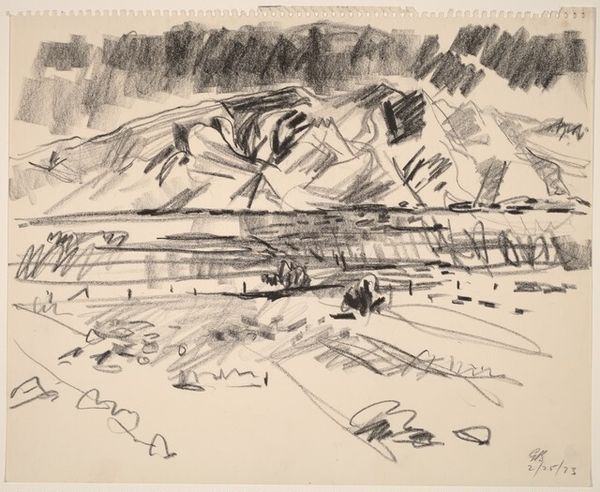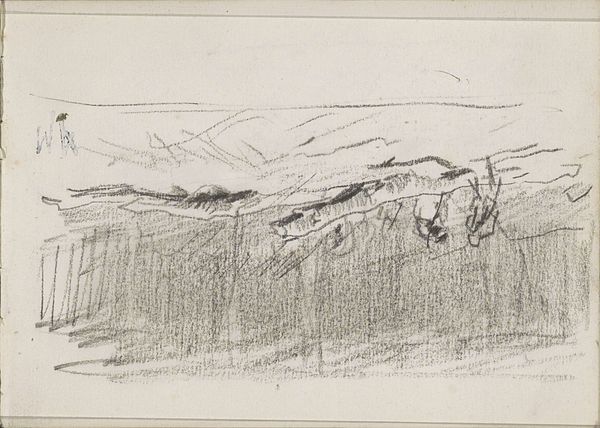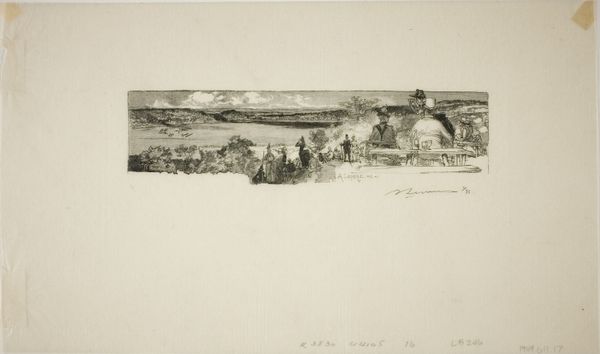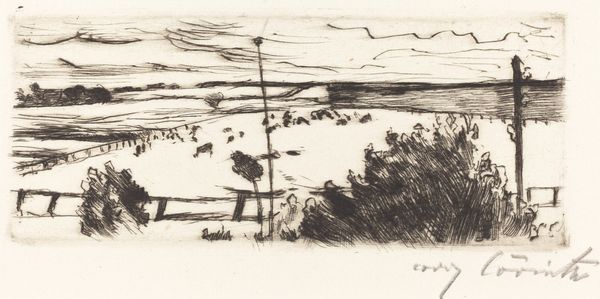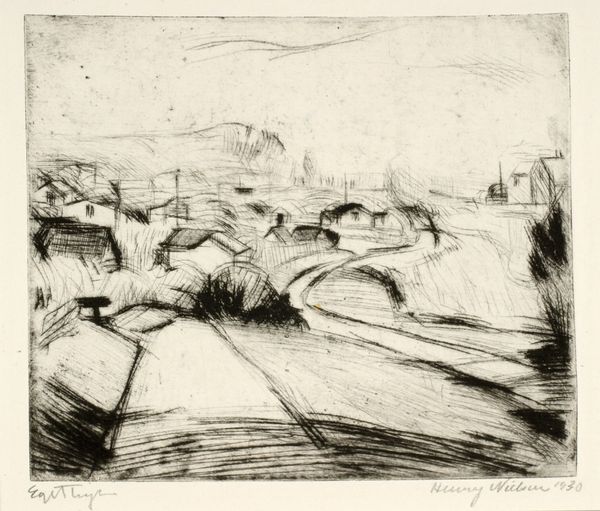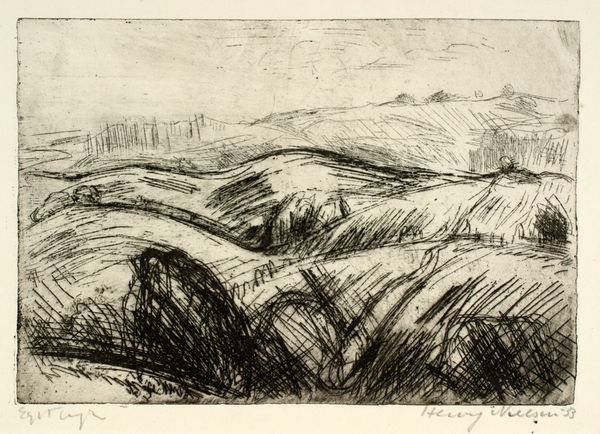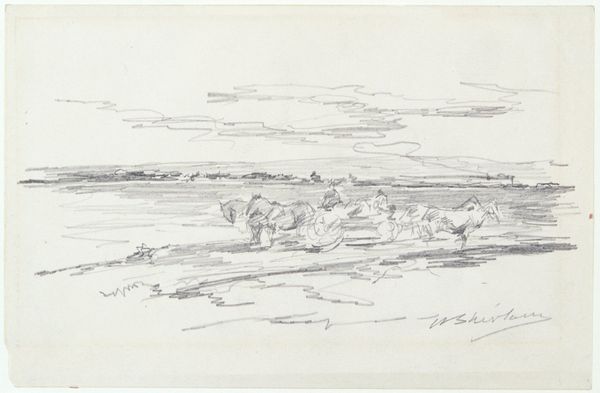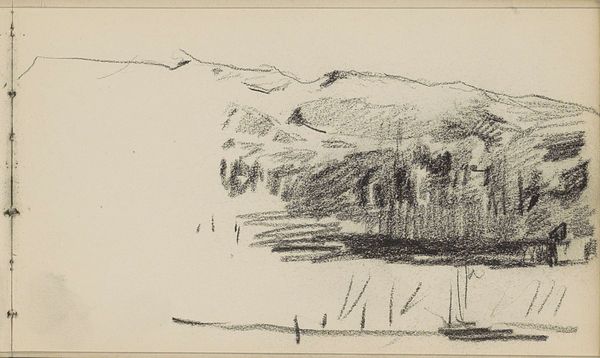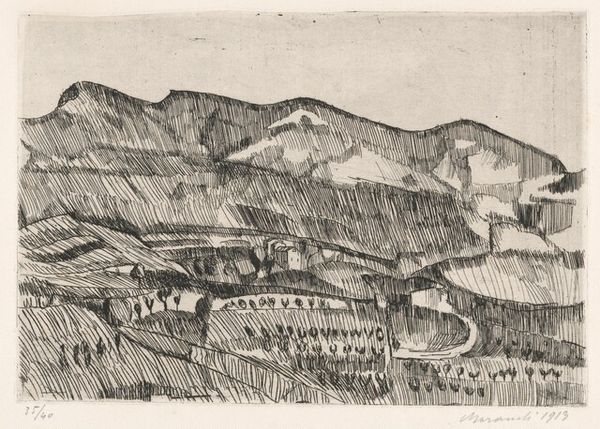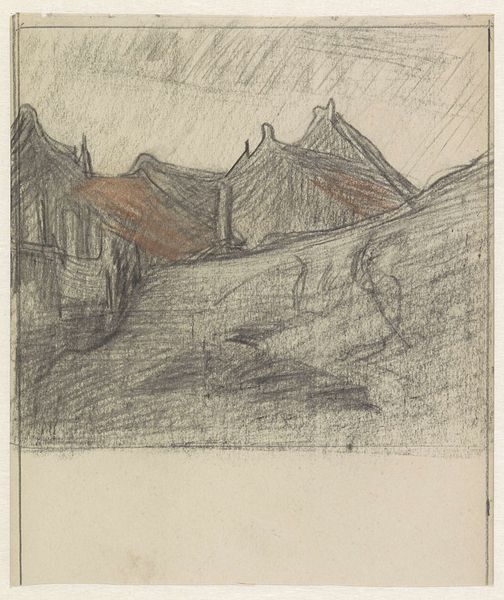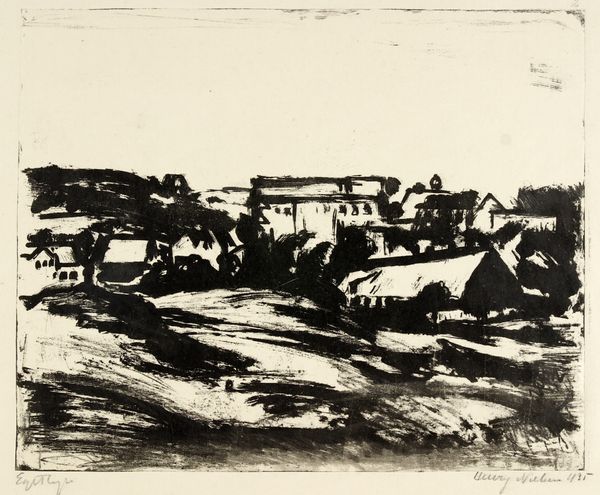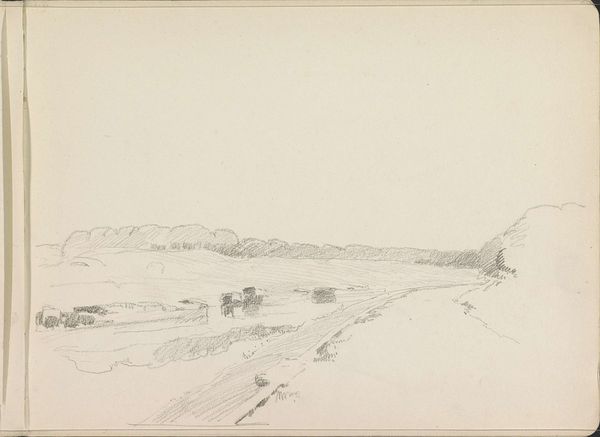
Copyright: Martyl Langsdorf,Fair Use
Curator: Before us is "Landscape with Mountains," a 1953 pen and ink drawing by Martyl Langsdorf. Editor: Immediately, I feel a kind of… unsettled energy. The heavy, dark ink against the stark white paper—it's so dramatic, almost like a stage set for a brooding play. Curator: Langsdorf uses a really striking economy of line, wouldn’t you say? Look at the bare minimum of strokes needed to suggest the ruggedness of those mountains. There's abstraction at play, certainly, but grounded by this representational anchor. Editor: True, and consider that stark black ink – a deliberate choice, manufactured according to precise recipes, traded, acquired. It's the result of labor, of material transformations to create that drama you mention. Were other materials available to her, or did she chose them as well. Curator: That makes me wonder what she was thinking, or maybe more viscerally, what she was feeling as she created it. Perhaps a sense of the sublime, confronting something monumental and trying to capture its essence with such simple means? Editor: I appreciate your view of course, but let's talk about that paper. Where was it produced? By whom? Paper, after all, represents deforestation, and access to information that shapes societies and politics of the world. That paper isn't passive and she, as a artist, engages in this field with all of her artistic choices. Curator: It’s a stark reminder, yes. I think that friction – that push and pull between material consequence and expressive intent – is part of what makes this piece so compelling. Maybe she knew that by limiting the shades, limiting the textures she would have to imply and not display completely the full nature of the artwork in from of us, with one colour drawing you in. Editor: A single color emphasizing a complexity behind landscape artwork. The tension embedded in the choice, like that paper you were mentioning – it all shapes meaning and invites to rethink assumptions behind its image making, the choices and context behind this striking "Landscape with Mountains." Curator: I guess, ultimately, for me it remains a landscape of the mind as much as the external world; the essence of this artwork stays for you because the landscape allows that, its visual simplicity allows for an introspective reading about a beautiful but simple work.
Comments
No comments
Be the first to comment and join the conversation on the ultimate creative platform.
